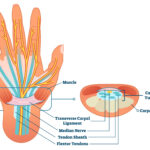With today’s aging population, bone deterioration and resulting injuries are becoming an increasingly common and serious problem within the medical field. According to the U.S.
Census Bureau, there are over 59 million senior citizens as of 2019.
Bone defects and injuries stemming from trauma, osteoporosis or tumors can cause challenges for orthopedics, oral surgery and neurosurgery.
Fortunately, medical innovation in the area of regenerative medicine is steadily progressing forward. Bone regeneration has been a priority focus for the area of regenerative medicine for some time now.
At its core, regenerative medicine often relies on the healing function of stem cells. In the case of bone regeneration, stem cells continue to play a critical role.
According to an academic journal titled Adult Stems Cells for Bone Regeneration and Repair, stem cells are able to secrete bioactive molecules and regulate the behavior of other cells in different host tissues.
It is believed that the stem cells effectively and rapidly encourage bone repair and growth.
Bone regeneration from stem cells can be used within neurosurgery for scenarios such as spinal fusions or skull fractures.
In the case of spinal fusion, a neurosurgeon places bone or bonelike material within the space between two spinal vertebrae.
Metal plates, screws and rods may be used to hold the vertebrae together, so they can heal into one solid unit.
Regenerative medicine provides an alternative to using foreign objects and encourages bone regeneration.
In the case of a skull fracture (likely caused by a form of trauma), there is a break or fissure within the skull that can sometimes require surgery for proper healing.
Regenerative medicine via stem cells may help bone regenerate and replace the need for invasive surgery.
It is important to note that regenerative medicine has made massive strides forward in terms of medical research and application; however, it is still viewed as an emerging area of medical innovation and is becoming more common.
In the coming years, we at Keuther Brain & Spine are excited to see how bone regeneration evolves as it is has very clear usages within our practice and community.
For us, bone regeneration is on the cutting-edge of medical innovation and promises incredible potential to improve people’s lives.
We are especially excited to continue learning more about stems cells as we look to cater to an aging population and its many medical needs.










